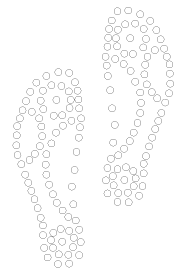Zaldua site
This project relates to the Roman-period site of Zaldua, located between the towns of Auritz/Burguete and Aurizberri/Espinal, in the Navarra Pyrenees. The site consists of a town from the Roman period, centred around the road that passes through this mountainous area, connecting the territories of Hispania and Gaul.

FOR FURTHER INFORMATION::
Zaldua website https://www.es.zaldua.pyrena.eus/
You will find all of the information about the site and the research performed there.
Videos of previous fieldwork Videos of the archaeological fieldwork in Zaldua 2019 and in Otegi 2016
Practical information Directions to the site, patronage programme, etc.
Ever since the start of the 20th century, when the historian Julio Altadill suggested that the finds made in Aurizberri/Espinal may have belonged to the Iturissa mansio (mentioned in classic literary sources), the Roman remains recorded in this area have been associated with that name. However, thus far no written evidence has been found to confirm that theory and, consequently, the site bears the current name of the place where it is located, i.e. Zaldua.
GEOGRAPHICAL CONTEXT
The Zaldua site stands between the modern towns of Auritz/Burguete and Aurizberri/Espinal (Erroibar/Erro Valley), in the northeast corner of the province of Navarra (32 km from Pamplona). It stands in a strategic location, at an altitude of 894 metres on the plateau that stretches to the south of the Ibañeta pass (1057 metres) and, specifically, on the western banks of the Arranosina Stream, a tributary of the Urrobi River. Click here for the location: directions.
The site now stands between the land of two towns, as the dirt track is the border between Aurizberri/Espinal (within the municipal territory of Erroibar/Erro Valley) and Auritz/Burguete. Thus, the western side of the road is called Otegi, where there are outer structures from the settlement (including the necropolises), while Zaldua is the place name given to the plot to the east of the track (within the municipal territory of Auritz/Burguete), where the town and most of the site have been identified.
ARCHAEOLOGICAL EXCAVATIONS
The first excavations carried out on the Zaldua archaeological site were the surveys that were completed in 2012. This trial trenching was carried out after the milestones were discovered in 2011, given the possibility of further remains being identified in several areas close to the route followed by the Roman road. Thus, an archaeological deposit was recorded at approximately 2 metres, along with floors, walls and other materials from the Roman period.
However, in the previous decade, other archaeological digs were carried out in the vicinity of Zaldua, specifically in Ateabalsa and Otegi, both in areas of Aurizberri/Espinal (in Erroibar/Erro Valley). Both sites were located by Juan Mari Martínez Txoperena when he found materials from the Roman period on the surface and made a record of them. These sites were excavated in the 1980s and 1990s and two cremation necropolises and the remains of a small village were documented (for further information, articles about that fieldwork can be viewed by clicking on the bibliography).

